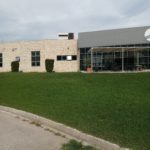The Battle of Thermopylae, fought in 480 BCE, remains a fascinating topic that captivates history buffs to this day. This historic conflict pitted the ancient Spartans against the mighty Persian army, resulting in a brave stand by the 300 Spartans against overwhelming odds.
Key Takeaways:
- The Battle of Thermopylae took place in 480 BCE between the ancient Spartans and the Persian army.
- The 300 Spartans’ brave stand against overwhelming odds is a captivating aspect of this historic conflict.
- This battle continues to inspire and intrigue due to its portrayal of heroism and sacrifice.
- It marked a crucial moment in the Persian invasion of Greece, leading to the Greek city-states’ eventual victory.
- The Battle of Thermopylae had a significant impact on Greek culture, warfare, and the sense of unity among the city-states.
The Legacy of Sparta in Modern and Contemporary Life
While ancient Athens often takes the spotlight for its art and philosophers, the legacy of Sparta is a significant yet often overlooked aspect of ancient Greek history. One particular event that continues to resonate is the Battle of Thermopylae, which showcases the remarkable bravery and military prowess of the Spartans. Despite their lack of artistic achievements, Sparta’s military reputation and the enduring legacy of the battle continue to captivate and inspire.
Throughout history, the Battle of Thermopylae has served as a symbol of Spartan heroism and skill in warfare. The 300 Spartans’ stand against the overwhelming forces of the Persian army highlighted their unwavering commitment to their city-state and the values they held dear. Their sacrifice and determination have become legendary, representing the epitome of courage and resilience.
Moreover, the enduring legacy of Sparta can be seen in various aspects of modern and contemporary life. The concept of discipline, physical fitness, and a strong moral code is often associated with the Spartan way of life. This influence can be observed in military training, sports, and even everyday life where the principles of self-discipline and perseverance are valued.
In conclusion, while the Battle of Thermopylae may have ended in defeat for the Spartans, their legacy lives on. The remarkable display of courage and military prowess continues to inspire people today, reminding us of the enduring strength of the human spirit and the impact that a small group of determined individuals can have on history.
Table: The Battle of Thermopylae – Key Facts
| Year | Location | Outcome |
|---|---|---|
| 480 BCE | Thermopylae, Greece | Persian victory |
Misconceptions and Misrepresentations of the Battle
The Battle of Thermopylae, one of the most famous clashes in history, has been subject to numerous misconceptions and misrepresentations in popular culture. These inaccuracies have led to a distorted understanding of the actual events and the roles played by the Spartans and the Persian army.
One commonly perpetuated misconception is the iconic phrase attributed to the Spartans, “Come and get them.” While this phrase has become associated with their bravery and defiance, historical evidence suggests that it was a later invention rather than an actual statement made during the battle.
“Come and get them” – a phrase often misrepresented as being spoken by the Spartans at the Battle of Thermopylae. In reality, there is no historical evidence to support this claim.
Another popular phrase associated with the battle is “Tonight we dine in hell.” However, this quote, often attributed to King Leonidas, is also believed to be a later invention created for dramatic effect in modern retellings of the story.
In addition to these verbal misconceptions, there is also a numerical inaccuracy surrounding the Spartan forces at the battle. Contrary to the commonly known number of 300 Spartans, historical records indicate that there were actually 301 Spartans, accompanied by a small force of allies.
The Inaccuracies in Popular Depictions
The Battle of Thermopylae has been depicted in various forms of media, including films and literature. These adaptations often perpetuate the misconceptions and misrepresentations surrounding the battle. For example, the 2006 film “300” portrays the Spartans as an elite force of only 300 soldiers, emphasizing their heroism but disregarding the contributions of their allies.
It is important to distinguish between the Hollywood dramatizations and the historical reality of the battle. While the adaptations may serve as entertainment, they should not be considered accurate representations of the actual events.
| Misconception | Reality |
|---|---|
| 300 Spartans | 301 Spartans with allies |
| “Come and get them” | No historical evidence |
| “Tonight we dine in hell” | A later invention |
The Battle of Thermopylae in the Context of East vs. West
The Battle of Thermopylae is often misused as a symbol of the East vs. West conflict, with some political groups seeking to find legitimacy for their ideologies. However, the historical context is more complex, as the Persian army had alliances with Greek cities, such as the Thebans, and the Spartans had financial ties with eastern empires, including the Persians.
In reality, the Battle of Thermopylae was not solely a clash between East and West, but rather a complex web of alliances and power struggles between Greek city-states and the Persian Empire.
“The Battle of Thermopylae serves as a reminder that historical events are rarely as simple as they seem,” says Dr. Elizabeth Myers, a historian specializing in ancient warfare. “It is crucial to consider the political and economic factors that shaped the alliances and conflicts of that time period.”
While the Persians sought to expand their empire and assert dominance over the Greek city-states, not all Greeks were united in their opposition. Some city-states, such as Thebes, sided with the Persians, while others, like Athens and Sparta, resisted. This highlights the diversity and complexity of political motivations during the time of the Battle of Thermopylae.
| Greek City-States | Alliance |
|---|---|
| Athens | Anti-Persian Alliance |
| Sparta | Anti-Persian Alliance |
| Thebes | Persian Alliance |
It is vital to understand that the Battle of Thermopylae, while significant in its historical implications, cannot be simplified into a black-and-white East vs. West conflict. The alliances and motivations of the Greek city-states and the Persian Empire were far more nuanced, emphasizing the need for a comprehensive understanding of the complexities of ancient geopolitics.
The Historical Significance of the Battle
The Battle of Thermopylae holds great historical significance as it marked a crucial moment in the Persian invasion of Greece. The Persian Empire, under the leadership of King Xerxes, sought to expand its empire and conquer the Greek city-states. However, the brave resistance of the Spartans and their allies at Thermopylae allowed the Greek forces to regroup and prepare for future battles, ultimately leading to the Greek victory over the Persians.
This pivotal battle showcased the determination and resilience of the Greek city-states in the face of overwhelming odds. The Spartans, led by King Leonidas, demonstrated their unwavering commitment to protecting their homeland and preserving their way of life. Their sacrifice inspired other Greek cities to join forces and stand against the Persian invasion, uniting them in common cause.
“Go, tell the Spartans, stranger passing by, that here, obedient to their laws, we lie.” – Simonides
The Battle’s Impact on Greek City-States
The Battle of Thermopylae not only changed the course of history but also had a profound impact on the Greek city-states. It instilled a strong sense of unity and cooperation among them, emphasizing the importance of collective defense against external threats. The battle served as a rallying cry for the Greeks, pushing them to set aside their differences and work together for the greater good.
| Greek City-States | Alliances |
|---|---|
| Athens | Allied with Sparta and other Greek city-states to repel the Persian invasion. |
| Thebes | Initially aligned with the Persians but later switched sides and fought alongside the Greeks. |
| Sparta | Leads the Greek forces and provides a symbol of bravery and resistance against the Persian army. |
This newfound unity among the Greek city-states paved the way for the Golden Age of Athens, a period of remarkable cultural and intellectual achievements. With their shared experience of defying the Persians, the Greeks were inspired to pursue democracy, philosophy, and the arts, leaving a lasting legacy in human history.
As we reflect on the Battle of Thermopylae, we recognize its historical significance in shaping the destiny of Greece and inspiring future generations. The courage and determination of the Spartans and their allies exemplify the enduring human spirit in the face of adversity. Their resistance against the Persian invasion ignited a collective spirit among the Greek city-states, leading to their ultimate triumph and the preservation of Greek culture and civilization.
The Symbolism of Heroism and Sacrifice
The Battle of Thermopylae is celebrated for its portrayal of heroism and sacrifice in the face of overwhelming adversity. The story of King Leonidas and his 300 Spartans has become a symbol of courage and the fight for freedom. Their selfless act of sacrifice has inspired generations and resonates with people facing their own struggles against oppression.
This battle, fought in 480 BCE, showcased the unwavering determination of the Spartans to defend their homeland against the mighty Persian army. Despite being vastly outnumbered, the Spartans held their ground for several days, inflicting heavy casualties on the enemy. The Battle of Thermopylae stands as a testament to the indomitable spirit of the human will when faced with insurmountable odds.
“Go tell the Spartans, stranger passing by, that here, obedient to their laws, we lie.”
This famous quote, found on the memorial to the fallen Spartans at Thermopylae, encapsulates the enduring legacy of heroism and sacrifice that this battle represents. The Spartans’ refusal to surrender, even in the face of certain death, has become the epitome of bravery and defiance.
The Power of Sacrifice
What makes the Battle of Thermopylae so appealing is the symbolism it holds. It reminds us that sometimes, in order to preserve something greater than ourselves, sacrifice is necessary. The Spartans understood this concept and willingly gave their lives to protect their land and the ideals they held dear.
- The battle highlighted the noble virtues of duty, honor, and loyalty that were deeply ingrained in Spartan society.
- It serves as a reminder that true heroism lies not only in victory, but in the willingness to face overwhelming odds with courage and determination.
- The story of Thermopylae reminds us that even in the darkest moments, there is a flicker of hope and the potential for triumph.
The legacy of heroism and sacrifice embodied in the Battle of Thermopylae continues to inspire people today. It serves as a reminder that, in the face of overwhelming adversity, one can find the strength to stand up and fight for what they believe in. The story of Leonidas and his 300 Spartans resonates with people from all walks of life, reminding them of the power of the human spirit and the enduring value of courage.
| Key Points | Details |
|---|---|
| The Battle of Thermopylae | Symbolizes heroism and sacrifice in the face of overwhelming adversity |
| Spartans’ unwavering determination | Defended their homeland against the mighty Persian army |
| The famous quote | Reflects the enduring legacy of heroism and sacrifice |
| The power of sacrifice | Highlights the noble virtues of duty, honor, and loyalty |
| Inspiration and legacy | Continues to inspire people today, reminding them of the power of the human spirit |
The Battle’s Impact on Greek Culture and Warfare
The Battle of Thermopylae had a profound impact on Greek culture and warfare, shaping the tactics and mindset of the Greek city-states. The battle highlighted the importance of strategic thinking, discipline, and unity in the face of overwhelming odds. It showcased the power of the phalanx formation, a tightly packed infantry formation that became the backbone of Greek military strategies.
The phalanx formation, consisting of heavily armed hoplites, or citizen-soldiers, proved to be highly effective against the Persian army’s larger numbers. By locking shields and advancing as a cohesive unit, the Greek city-states were able to withstand the Persian onslaught and inflict significant casualties.
The Battle of Thermopylae also had a lasting cultural impact on the Greek city-states. It served as a symbol of heroism and sacrifice, with King Leonidas and his 300 Spartans becoming iconic figures of bravery. Their willingness to lay down their lives for the greater good resonated deeply with the Greek citizens and fueled a sense of unity and determination against external threats.
The Legacy of the Phalanx Formation
The phalanx formation, perfected by the Greeks in battles like Thermopylae, became a defining aspect of Greek warfare. It not only allowed smaller Greek forces to stand against larger enemy armies but also fostered a sense of collective identity and pride among the citizen-soldiers. The discipline and coordination required to maintain the phalanx formation instilled a strong sense of camaraderie and mutual support among the troops.
This legacy of the phalanx formation endured long after the Battle of Thermopylae. It influenced military tactics in subsequent Greek conflicts and even influenced other civilizations in the ancient world. The success of the phalanx formation in battle became a source of inspiration and admiration, leading to its adoption by other city-states and empires in their own military strategies.
| Impact of the Battle of Thermopylae on Greek Culture and Warfare | Examples |
|---|---|
| Importance of Strategy | The Greeks recognized the need for careful planning and coordination to overcome superior enemy forces. |
| Unity and Cooperation | The battle fostered a sense of unity among the Greek city-states, leading to cooperation and collective defense against further Persian incursions. |
| Phalanx Formation | The battle showcased the power of the phalanx formation, influencing Greek military tactics and inspiring other civilizations. |
| Legacy of Heroism | The bravery and sacrifice of King Leonidas and his Spartans became legendary, inspiring generations and reinforcing the ideals of courage and freedom. |
The Enduring Popularity of the Battle
The Battle of Thermopylae has captured the imagination of people for centuries due to its portrayal of heroism, sacrifice, and the struggle for freedom. The story of King Leonidas and his 300 Spartans has been passed down through generations, inspiring countless retellings in literature, art, and film. This legendary battle continues to resonate with audiences worldwide, showcasing the indomitable human spirit in the face of overwhelming adversity.
Through their selfless act of sacrifice, the Spartans at Thermopylae have become symbols of courage and resilience. Their unwavering commitment to defend their homeland against the mighty Persian army has left a lasting impression on history. Their bravery not only serves as a reminder of the importance of standing up against oppression but also inspires individuals facing their own struggles to persevere and never lose hope.
“Tonight we dine in hell” and “Come and get them” may be popular catchphrases associated with the Battle of Thermopylae, but it is important to separate fact from fiction. While the actual battle may not have included these dramatic statements, they have come to symbolize the Spartans’ fierce determination and unwavering resolve. The enduring popularity of these phrases and their connection to the battle further solidify its place in popular culture.
Table: The Enduring Appeal of the Battle of Thermopylae
| Reasons for Popularity | Examples |
|---|---|
| Heroic Sacrifice | The 300 Spartans’ willingness to lay down their lives for their country |
| Universal Themes | Bravery, freedom, and the fight against oppression resonate with audiences worldwide |
| Inspiring Stories | The tale of the Battle of Thermopylae has inspired countless retellings in various forms of media |
| Historical Significance | The battle marked a turning point in the Persian invasion of Greece and the subsequent Greek victory |
The enduring popularity of the Battle of Thermopylae is a testament to its ability to captivate and inspire people across generations. It serves as a reminder of the timeless values of heroism, sacrifice, and the struggle for freedom. As long as these themes continue to resonate with audiences, the legacy of the Spartans and their heroic stand will remain alive in our collective consciousness.
A Lasting Legacy
The Battle of Thermopylae left a lasting legacy on the Greek city-states. It fostered a sense of unity and cooperation among the city-states, leading to advancements in philosophy, art, and science during the Golden Age of Athens. The battle’s impact on Greek culture and warfare cannot be overstated, as it demonstrated the power of a united front against tyranny.
One of the most significant legacies of the Battle of Thermopylae was the sense of unity it instilled among the Greek city-states. In the face of a common enemy, the city-states set aside their differences and rallied together to resist the Persian invasion. This newfound unity paved the way for the formation of the Delian League, an alliance that would later evolve into the Athenian Empire.
The Battle of Thermopylae also had a profound influence on Greek military tactics and warfare. The Spartans’ use of the phalanx formation, combined with their disciplined and highly trained soldiers, showcased the effectiveness of a well-organized and cohesive fighting force. This battle served as a model for future military strategies and inspired the development of new tactics.
In addition to its impact on politics and warfare, the Battle of Thermopylae also played a significant role in shaping Greek culture. The tale of the 300 Spartans and their heroic stand against insurmountable odds became a symbol of courage, sacrifice, and the fight for freedom. It inspired countless works of literature, art, and drama, immortalizing the bravery of the Spartans and solidifying their place in history.
| Legacy of the Battle of Thermopylae | Greek City-States | Unity and Cooperation |
|---|---|---|
| Advancements in philosophy, art, and science during the Golden Age of Athens | Formation of the Delian League and Athenian Empire | Collaboration against common enemies |
| Influence on Greek military tactics and warfare | Development of new strategies and tactics | Effective use of the phalanx formation |
| Cultural impact and inspiration | Immortalization of Spartan bravery | Symbols of courage, sacrifice, and freedom |
Conclusion
In conclusion, the Battle of Thermopylae has remained a captivating event in history due to the heroic stand of the Spartan soldiers against the Persian army. Their sacrifice and the ultimate victory of the Greek city-states hold great historical significance. The battle continues to inspire people today, serving as a reminder of the enduring human spirit and the power of unity, sacrifice, and bravery.
The legacy of the Battle of Thermopylae extends beyond its historical context. It has inspired countless retellings in literature, art, and film, celebrating the indomitable human spirit and the fight for freedom. The battle’s impact on Greek culture and warfare cannot be overstated, highlighting the importance of strategy, discipline, and the unity of smaller, well-disciplined forces.
As we reflect on the Battle of Thermopylae, we are reminded of the lasting legacy it has left on the world. The brave actions of the Spartan soldiers have become a symbol of courage and determination, inspiring generations to stand up against overwhelming adversity. The battle continues to fascinate and captivate history buffs, showcasing the historical significance of the Spartan soldiers’ unwavering resolve and the power of their collective sacrifice.
FAQ
What is the Battle of Thermopylae?
The Battle of Thermopylae is a historic conflict that took place in 480 BCE between the ancient Spartans and the Persian army.
Why is the Battle of Thermopylae interesting?
The Battle of Thermopylae is interesting because it showcases the brave stand of the 300 Spartans against overwhelming odds, making it an enduring symbol of Spartan bravery and skill in warfare.
How many Spartans were present at the Battle of Thermopylae?
The actual number of Spartans present at the Battle of Thermopylae was 301, not 300.
What are some misconceptions about the Battle of Thermopylae?
One misconception is that the iconic phrases attributed to the Spartans, such as “Come and get them” and “Tonight we dine in hell,” are likely later inventions.
Was the Battle of Thermopylae a conflict between East and West?
The Battle of Thermopylae is often misused as a symbol of the East vs. West conflict. However, the historical context is more complex, as the Persian army had alliances with Greek cities, such as the Thebans, and the Spartans had financial ties with eastern empires, including the Persians.
What was the historical significance of the Battle of Thermopylae?
The Battle of Thermopylae marked a crucial moment in the Persian invasion of Greece. While the Spartans and their allies were ultimately defeated, their resistance allowed the Greek city-states to regroup and prepare for future battles, leading to the eventual Greek victory over the Persian Empire.
Why is the Battle of Thermopylae celebrated?
The Battle of Thermopylae is celebrated for its portrayal of heroism and sacrifice in the face of overwhelming adversity. The story of King Leonidas and his 300 Spartans has become a symbol of courage and the fight for freedom, inspiring generations.
How did the Battle of Thermopylae impact Greek culture and warfare?
The Battle of Thermopylae highlighted the importance of strategy, terrain, and discipline in determining the outcome of battles. It showcased the Greek’s use of the phalanx formation and demonstrated that smaller, well-disciplined forces could stand against numerically superior armies.
Why has the Battle of Thermopylae remained popular throughout history?
The Battle of Thermopylae remains popular due to its portrayal of heroism, sacrifice, and the struggle for freedom. The story of Leonidas and his 300 Spartans has inspired countless retellings in literature, art, and film, resonating with people facing their own struggles against oppression.
What is the lasting legacy of the Battle of Thermopylae?
The Battle of Thermopylae fostered a sense of unity and cooperation among the Greek city-states, leading to advancements in philosophy, art, and science during the Golden Age of Athens. It demonstrated the power of a united front against tyranny.
Source Links
- https://englishpluspodcast.com/the-battle-of-thermopylae-a-detailed-analysis-of-the-iconic-struggle/
- https://www.thecollector.com/300-spartans-battle-thermopylae-story/
- https://www.historyhit.com/why-does-the-battle-of-thermopylae-matter-2500-years-on/
Author Profile
-
Welcome to e-thermopyles.gr, your gateway to the fascinating world of Thermopylae and the legendary Spartans. My name is George Margaritis, and I’m the proud owner and writer behind this website.
A Passion for History and the Spartan Legacy
I consider myself fortunate to call the historic site of Thermopylae my home. From a young age, I was captivated by history, and in particular, the incredible tale of the Battle of Leonidas in Thermopylae. The valiant stand of King Leonidas and his 300 Spartans against overwhelming odds has left an indelible mark on the annals of history.
As I delved deeper into this captivating story, my fascination only grew. The bravery, strategy, and sacrifice of those Spartan warriors resonated with me, and I wanted to share this rich history with the world. That’s why I created e-thermopyles.gr, a platform dedicated to exploring and uncovering the depths of knowledge surrounding Thermopylae and the Spartans.
Latest entries
 HistoryOctober 31, 2023Exploring Why is the Battle of Thermopylae Interesting
HistoryOctober 31, 2023Exploring Why is the Battle of Thermopylae Interesting GuidesOctober 31, 2023Your Guide to the Athens to Thermopylae Train Journey
GuidesOctober 31, 2023Your Guide to the Athens to Thermopylae Train Journey GuidesOctober 31, 2023Uncover the Mystery: Where is Thermopylae Today?
GuidesOctober 31, 2023Uncover the Mystery: Where is Thermopylae Today? GuidesOctober 31, 2023Uncover History by Visiting Thermopylae – A Travel Guide
GuidesOctober 31, 2023Uncover History by Visiting Thermopylae – A Travel Guide






